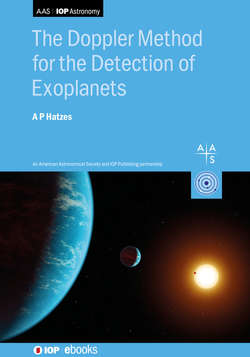Читать книгу The Doppler Method for the Detection of Exoplanets - Professor Artie Hatzes - Страница 36
На сайте Литреса книга снята с продажи.
2.3.9 Saturation and Blooming
ОглавлениеThe voltage potential well in each pixel can only hold a fixed number of electrons. Above this value, called the “full-well capacity,” the pixels have saturated, and additional electrons then spill over into adjacent pixels along columns in an effect called “blooming” (Figure 2.20). The saturated pixels appear as a hot column with values of the full well (Figure 2.21).
Figure 2.20. Blooming in CCD. When the amount of charge exceeds the potential well of the pixel, it starts to spill over into the direction of readout, i.e., columns.
Figure 2.21. A CCD image of the Pelican Nebula (north is to the right). The vertical streaks are due to blooming of saturated pixels. Image credit: Thüringer Landessternwarte Tautenburg.
Modern CCDs have a full-well capacity of ≈100,000–200,000 e−1. The full-well capacity defines the maximum S/N you can achieve in a single exposure. For example, a full well of 100,000 e−1 means you cannot achieve an S/N higher than about 316 in a single exposure.
Antiblooming CCDs can eliminate the effects of saturation. This is done with additional gates that bleed off the overflow due to saturation. The disadvantage of this is that these “bleed off” gates cover about 30% of the pixel. This results in reduced sensitivity, smaller well depth, and lower resolution, due to the increased size of gaps between pixels.
